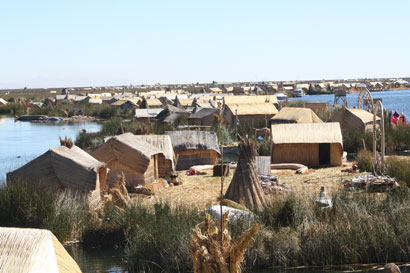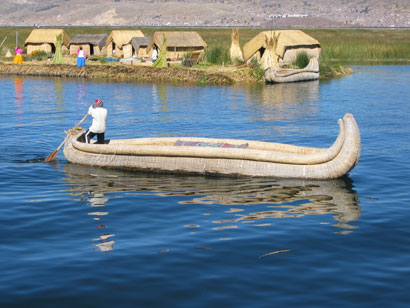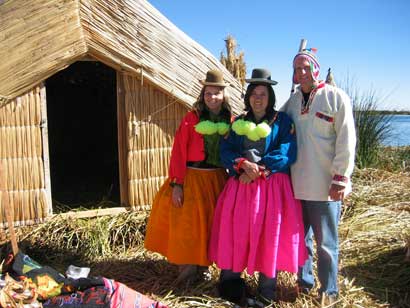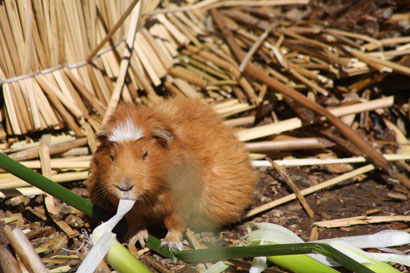Three weeks in Peru was perfect, considering this was the first major trip My Liege and I had taken without the kids in…ever. Two weeks would have been too short. Four weeks, and I fear I would have become too homesick. We might try four weeks next time, but three weeks for this trip was bang on the nose. Don’t tell my kids, but at this point I was worried more about the dog than them! I missed the dog more than them! I know that sounds awful. But the kids are 22 and 20 (19 for the youngest when we were in Peru), they have a great support network, and both have nice girlfriends. But were they looking after my baby dog’s needs? (well, she’s 8, but to me she’s a baby). And what about the channeling? Allie McBeagle, I discovered, couldn’t channel through me to express herself while I was in Peru. She tried once, and it came out sounding like a drunk Martian playing with a voice-changer. Allie was simply too far away for proper channeling to occur. If that doesn’t depress a channeler, no matter how amazing the spot she’s visiting, I don’t know what will.
Day 18 was a travel day. We spent the morning in the Cusco Plaza de Armas, practicing our “no, thanks” skills with the vendors. When who should we meet but the young woman named Nikki from Scotland who had done a Lima City Tour with us. My Liege recognized her accent when she tried enticing us to the restaurant run by the orphanage where she was volunteering. Yes, now people we actually knew were also hawking to us! We didn’t have time to visit the restaurant, or we would have. For Nikki, who had a funny fear of birds that endeared her to us. But we had to catch a shuttle to the airport and fly to Juliaca, the nearest town to Lake Titicaca with an airport.
I’m pretty sure the only reason anyone, or any tourist, I should say, goes to Juliaca is to get to Puno and therefore to Lake Titicaca. Large vans/small buses are waiting at the Juliaca airport to get you out of there as quickly as possible. Most guidebooks will tell you it’s not a place to hang around.
The bus dropped us off at The Balsa Inn. (By the way, I have no idea how old that picture is, but the Inn looked pretty dreary when we were there). We had booked our Lake Titicaca Homestay through GAP, the same company that put us in the 5-star hotels for Cusco, the Sacred Valley and Aguas Calientes, and the same company that booked us into a decent 3-star hotel in Nasca. Maybe it was just us (I’m pretty sure not), but The Balsa Inn sucked. I would not recommend it. My Liege and I ate that evening in a restaurant of another hotel just off the main square that would have done us much better. The Balsa Inn felt very 2-star to me. The next morning, we met another Canadian who had used the same tour company to book the place, and she felt the same way. We only had one night there before going onto Lake Titicaca, so we thought we’d just tough it out. After all, we’d stayed in worse places as students backpacking through Europe. But at this time of our lives, we expected more than to have 80% of the lightbulbs burned out in our room, that the toilet would have flushing problems, that there was zero hot water.
What the heck, we suffered through.
The next morning, we were picked up and taken to the harbor along with the Canadian girl from Toronto. The van picked up a lot of other people, and everyone but us and the Canadian girl had booked through various agencies. The commonality was a local company called Edgar Tours. Or maybe it was Edgar Adventures. Whoever it was, they did a good job. We had a great, knowledgeable guide named Tito Castro. And we quickly realized something.
Trip Tip! If you want to tour Lake Titicaca, don’t bother thinking you’re saving yourself time and aggravation by booking before you leave North America. The N.A. company will usually subcontract to a local firm like Edgar Adventures, and E.A. does such a decent job, why not hire them from the get-go? And for the nights you have to stay in Puno before and after Lake Titicaca? Do yourself a favor and avoid “three star” hotels. “Three stars,” in my experience, does not mean the same thing in Puno as it does in Cusco and Lima. See if you can find a four-star hotel instead. Or be prepared for more of a “hostel”-like stay.

The Floating Islands of Lake Titicaca are now a part of “Peruvian Disneyland.” Everyone I spoke to who visited Uros, either with our group or not, enjoyed visiting the Floating Islands but felt it was “too commercial.” Well, tourists caused the commercialization. The fact remains that people really still live on the floating islands, except now they depend on tourism for a large portion of their income.

The islands are “floating,” because they are constructed of huge pieces of sod and reeds that are anchored to the lake bottom. Wikipedia has a good write-up. There are about 42 islands. The small houses are constructed of reeds, and the boats are made of reeds, as well (although they now use motorized boats if they wish). Some residents might never leave the islands, while others go to make a living in Puno and return now and again.


When our tour boat stopped at one of the floating islands, gaily dressed women were there to show us how the islands were constructed, to entice us to buy their wares (I bought an embroidered pillowcase cover and a replica of a tiny reed boat), and to welcome us with open arms. They were extremely friendly.
When you walk onto the island, it feels a little like walking on a waterbed. Your foot sinks, and it takes a while to get the knack of it. Almost as soon as I stepped out of the area where the construction of the islands was explained to us, a Uros woman encouraged me to enter her “casa.” There, she dressed me in some of her clothes. My husband ducked in to find out what was going on, and he got dressed up like a little doll, too!

We met more Canadians on our overnight tour of Lake Titicaca than anywhere else in Peru we visited. There were several, most from the Toronto area, in our tour group. Also, Americans, a friendly Colombian fellow named Daniel, some New Zealanders, and a girl with an English accent (where in England I could not tell you). Some were traveling together, having hooked up as traveling partners along the way. They’d stay together for a few days and then go on their separate ways again.



After Uros, we settled back into our Edgar Adventures tour boat and motored to Amatani Island, where we would stay overnight. We enjoyed sitting on top of the boat visiting with our compadres, and also Tito taught us several words in Quechua, the native Peruvian language. We needed to learn some Quechua on top of what little Spanish we’d acquired, because our homestay hosts weren’t guaranteed to know ANY Spanish. They definitely weren’t guaranteed to know any English. Thus began one of the most interesting and event-filled days and nights of my life!
(Sorry, for some reason, I can’t get the Comments function to work for this post).